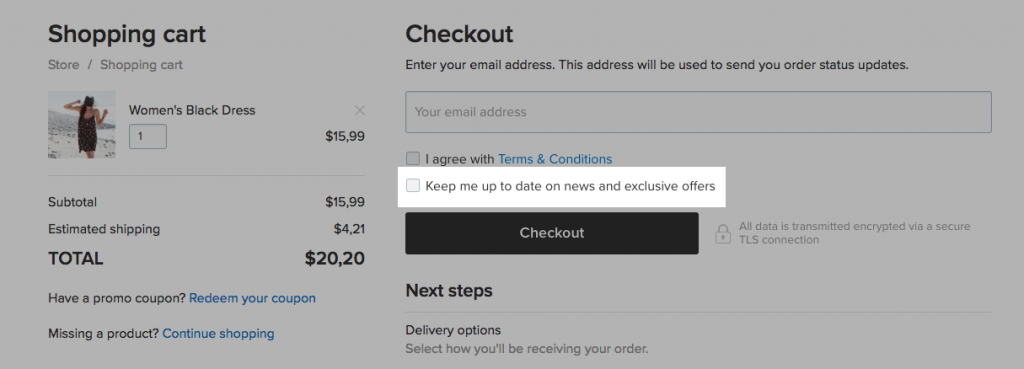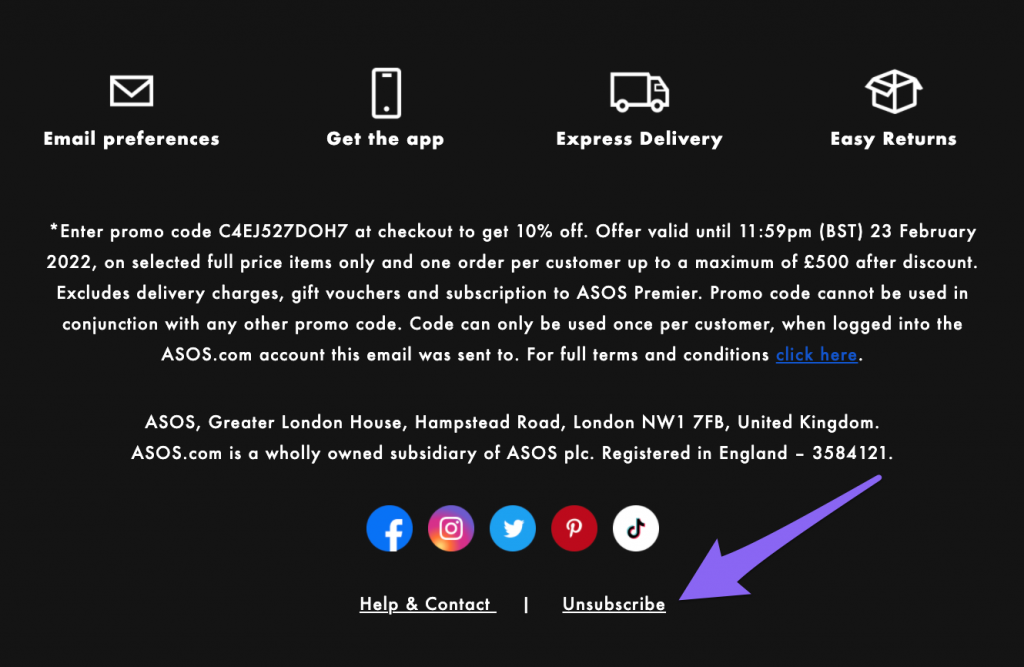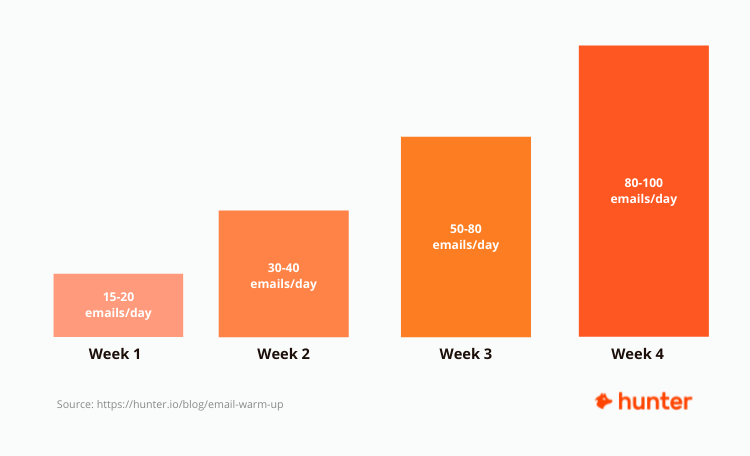Benjamin Franklin started publishing Poor Richard’s Almanac in 1734 to promote his printing business. He published trivia, wisdom, weather reports, and practically everything people found useful at the time. Franklin ended up selling 10,000 copies a year. It was the first time newsletters were used for content marketing and promoting a brand.
Newsletters worked back in 1734, and continue to do so in 2022. They are especially useful for ecommerce businesses. An ecommerce newsletter helps keep customers updated with new products and company news, making your recipients think of your business first when they need something. However, ecommerce newsletters are not just effective lead generation tools (aka, attracting potential buyers).
- 59% of buyers are influenced by marketing emails, according to SaleCycle.
- 4.14 billion people check their email every day. Email marketing revenue is set to cross $10 billion next year, as stated by Statista.
In an oversaturated market where ecommerce brands struggle to capture consumer attention, newsletters have become an effective way to build brand loyalty without shelling out millions. However, the success of ecommerce newsletters depends a lot on how many users actually receive them in their inboxes.
What is Email Deliverability?
Email deliverability is the ability to reach subscribers’ inboxes. This does not take into account the number of emails that go to the spam folder or are turned down by the recipient server.
If you send out a newsletter to 100 subscribers, you may see that it reached only 90 inboxes. Low email deliverability means reduced engagement, increased spam reports, and a high percentage of emails that have not successfully reached recipients. Poor email delivery doesn’t just impact the rate at which people open newsletters, but also endangers crucial transactional alerts, such as emails that notify customers about order and payment status updates.
In email deliverability terms, low open rates and engagement are clear signals to internet service providers that your recipients aren’t interested in your content. Low engagement can even lead to providers blocking your email campaigns.
As you can see, email deliverability is the first thing ecommerce owners need to track in their email marketing efforts.
How to Track Your Newsletters’ Deliverability?
Let’s start with the

If you want to get more insights to understand where you stand, you can also check out these tools that offer a free plan or a generous free trial:
- MailTester: MailTester offers quite a lot for free. It analyses your emails to determine their quality and offers solutions to improve your score. With the paid version, you can integrate the report into your email provider services and keep a list of purchased tests.
- MXToolbox: If you’re looking for a more
feature-rich email deliverability tool, MXToolbox can be the answer. It checks security protocols and shares reputation change alerts and geolocation of subscribers. - GlockApps: GlockApps is a robust deliverability tool that tests authentications, spam score, and IP reputation for seed list accounts (test email addresses created for the purpose of monitoring where messages will land when sent.) You can also see whether your newsletters are reaching the inbox, promotional, social, or spam folders. With GlockApps Bounce Monitor, you can check the bounce rate of your emails (aka the percentage of failed deliveries).
Now that you know the ways to check your ecommerce newsletter deliverability, it’s time to figure out the success of your campaigns.
Is Your Email Deliverability OK?
Ideally, you want to reach 100% of subscribers, 100% of the time. But the reality is often disappointing. According to the October 2021 edition of the EmailToolTester report:
- The average deliverability of major email tools is 85.3%. So if your deliverability is above 90%, you’re in a good spot.
- Deliverability changes each year slightly so focus on consistency.
- The ecommerce industry sees an average hard bounce rate (when the email has been returned to the sender because the recipient’s email address is invalid) of 0.19% and a soft bounce rate (indicates a temporary delivery issue) of 0.26%. Make sure you’re below these numbers for an email campaign to be effective.
How to Improve Your Email Deliverability?
If your email deliverability is not where you want it to be, that might be because of a content or technical problem. Fortunately, you can improve your numbers with a few tweaks.
Clean Your Email List
A lot of business owners buy
You should always try to build a subscriber list via

Even if you built your own list, many previous customers will stop opening your emails after some time. You need to either get rid of addresses that are inactive or send a reconfirmation email. It is an email that reminds your customers about your business and asks them to confirm their interest in your newsletters.
Periodically use an email verifier tool to trim your list and keep it updated. Failing to do so will increase your bounce rate, which is a red flag for the recipient’s email service provider (ESP). Over time, you will receive a low sender score, which is basically a credit score for your email campaigns. Once it is too low, email service providers may divert your emails to the spam folders.
When it comes to ecommerce newsletters, an engaged audience is far better than having many inactive recipients.
Make It Easy to Unsubscribe
With the conversation around GDPR (General Data Protection Regulation) and consumer privacy growing stronger, double
Even if your subscribers verify their emails, it doesn’t mean they want to stay in your list forever. That’s why you must allow them to easily unsubscribe from your list. One way you can do this is by adding an Unsubscribe link to each of your newsletters:

If you purposely make it hard to leave your email list, people might move your newsletter to the spam folder to avoid interacting with it. Getting a lot of spam reports might lead to your account being blocked or suspended by your ESP.
Overstaying your welcome might ruin the relationship with your customers permanently, so make sure to show you are willing to help your audience out. Word of mouth praise will increase brand loyalty, and you want to come off as flexible and understanding rather than spammy.
Personalize Your Emails on a High Level
Email is unique in the way it offers a detailed, personalized conversation between brands and customers. Focus on building

A warm and friendly approach combined with highly personalized content will win you a lot of customers and pull you out of the deliverability woes.
Avoid Spam Traps
Spam traps are an internet service provider’s way of protecting users. These decoys are meant to catch spammers, but can accidentally catch legitimate marketers.
The ESP will use fake email addresses as traps. These addresses are either not linked with any real person, spelled incorrectly, inactive, or recycled, meaning that the ESP takes a previously active account and reuses it for trapping reasons. The moment you send an email to one of these accounts, your deliverability takes a huge hit. Spam traps lead to blacklists, and blacklists lead to the death of ecommerce newsletters.
This is why you should use double
Related: What Happens If You Open a Spam Email
A quick note: if you want to add a video to your email, it’s always better to embed the video. Blasting out video links or using HTML codes will potentially mark your newsletters as spam.
Write Non-Spammy Subject Lines
There’s no point in writing a captivating email copy if you don’t spend as much (or even more) time on writing a subject line and preheader text. Here are some pointers on writing
- Focus on providing genuine value to the readers upfront.
- Use
attention-grabbing lines that are close to the reader’s persona. - Use names or recognizable references to drive relevance.
- Don’t use exaggeration to get clicks. Readers who feel deceived will mark your email as spam.
Take a moment to learn about Email Fails You Need to Avoid.
Protect Your Sender Reputation
This part is for more techy users, but we think it’s crucial for all ecommerce sellers to think about. The sender reputation score judges the reputation of the sender’s address on a scale of 0 to 100. This is an umbrella metric that considers many aspects of your email campaigns, including bounce rate, spam complaints, spam traps, open and
The reputation score is also dependent on the consistency of your email volume. A sudden uptick or decrease may alert an ESP of your emails. If you’re just starting out, gradually increase the volume of emails you send over time, as shown in the graphic below, so as to appear like a legitimate business:

Finally, use the authentication protocols. Sender Policy Framework (SPF) verifies the IP address of the sender while DomainKeys Identified Mail (DKIM) checks the ownership of the email in transit. These protocols are easy to set up, even if you don’t consider yourself
Check out this quick guide on how to prove your identity and secure your email account in just a few clicks.
Summing Up
You should only use emails to build your brand if you know your newsletters are being delivered properly and efficiently. To improve the deliverability of your ecommerce newsletters, create emails that are worth opening. Stay consistent in your strategy and personalize as you go. Follow in Benjamin Franklin’s footsteps when making a great newsletter, and you are sure to succeed!
- What Is Email Marketing and the Benefits
- How To Write A Welcome Email That Sells
- What Is Email Marketing Funnel
- 10 Evergreen Smart Ways to Grow Your Newsletter List
- How to Send Trigger Emails That Keep Customers Coming Back
- How to Increase Your Revenue With Newsletter Segmentation
- Ecommerce Email Marketing Best Practices to 3x Sales
- 5 Email Fails You Need to Avoid
- How to Reflect Your Brand Personality in Your Emails
- How to Improve the Deliverability of Your Ecommerce Newsletter
- The Best Professional Email Address Ideas
- The Best Email Marketing Service for Ecommerce
- The Best Email Marketing Software for Ecommerce
- The Best and Must Have Email Marketing Templates
- Email Marketing Benchmarks









